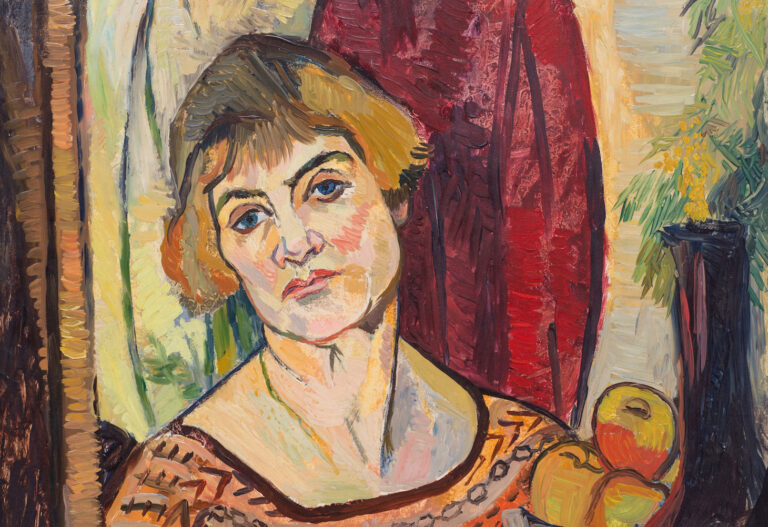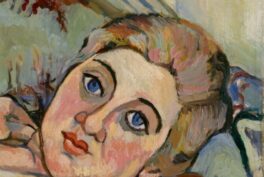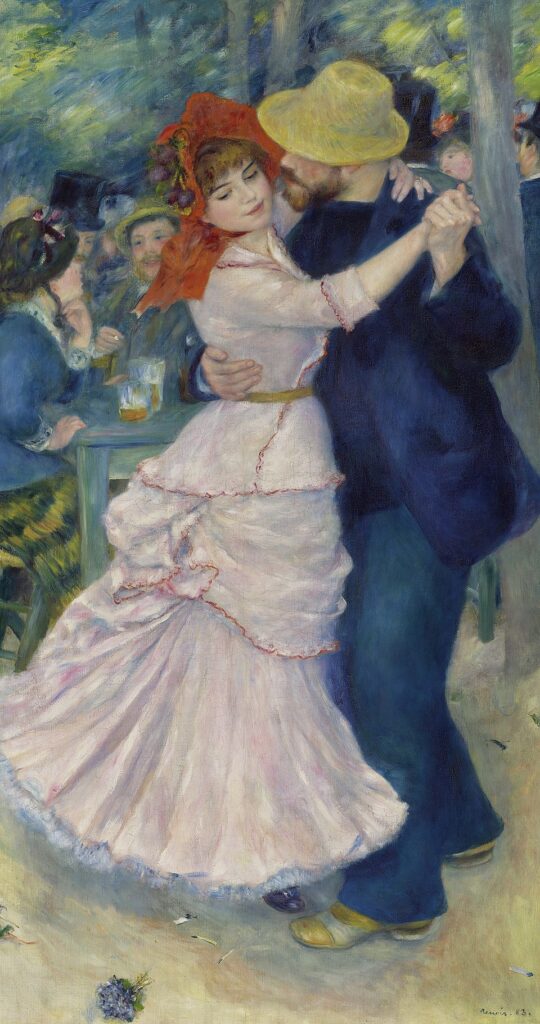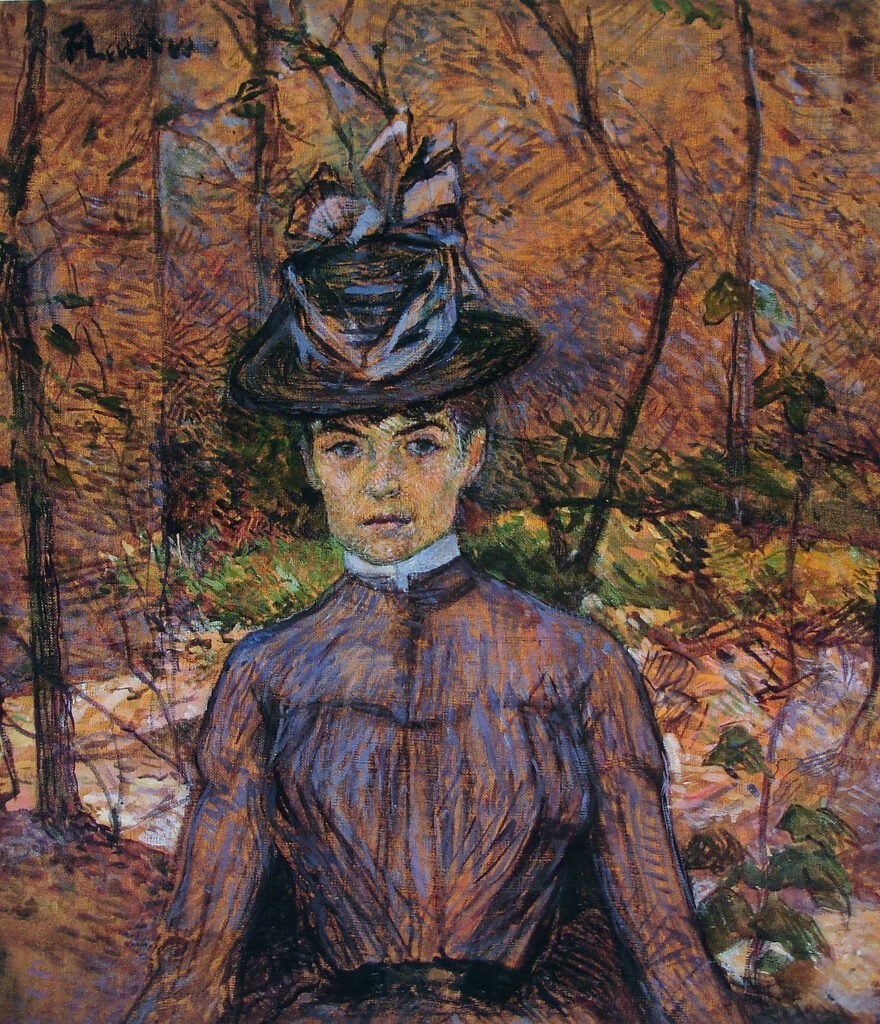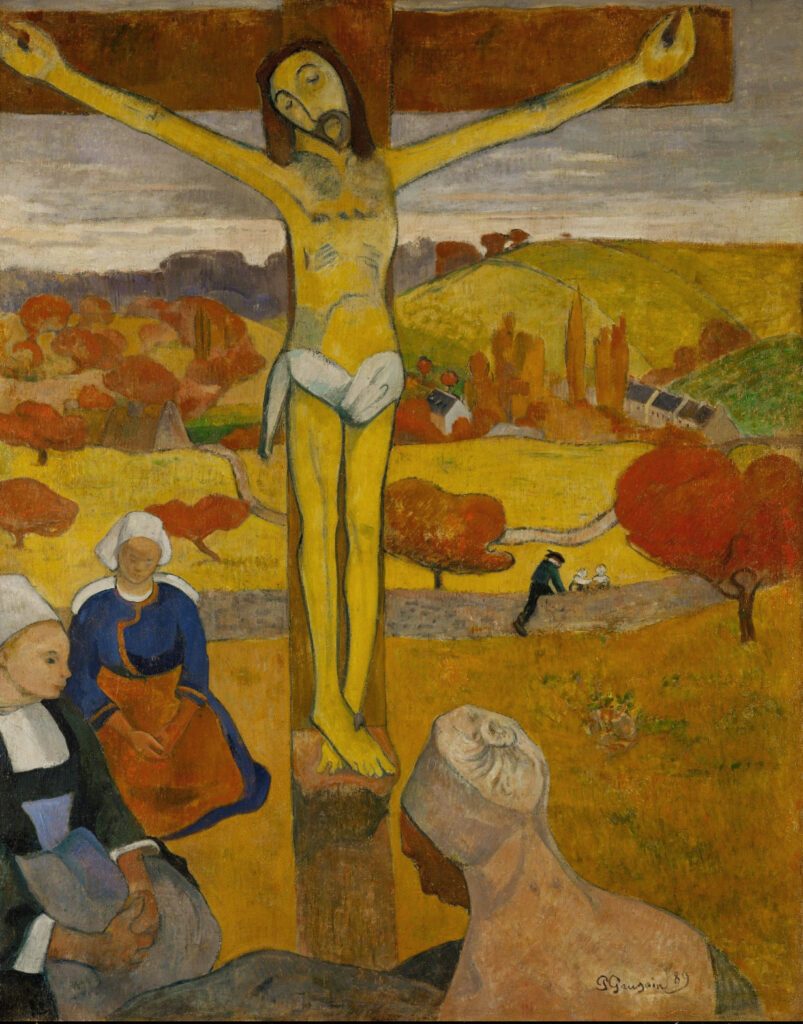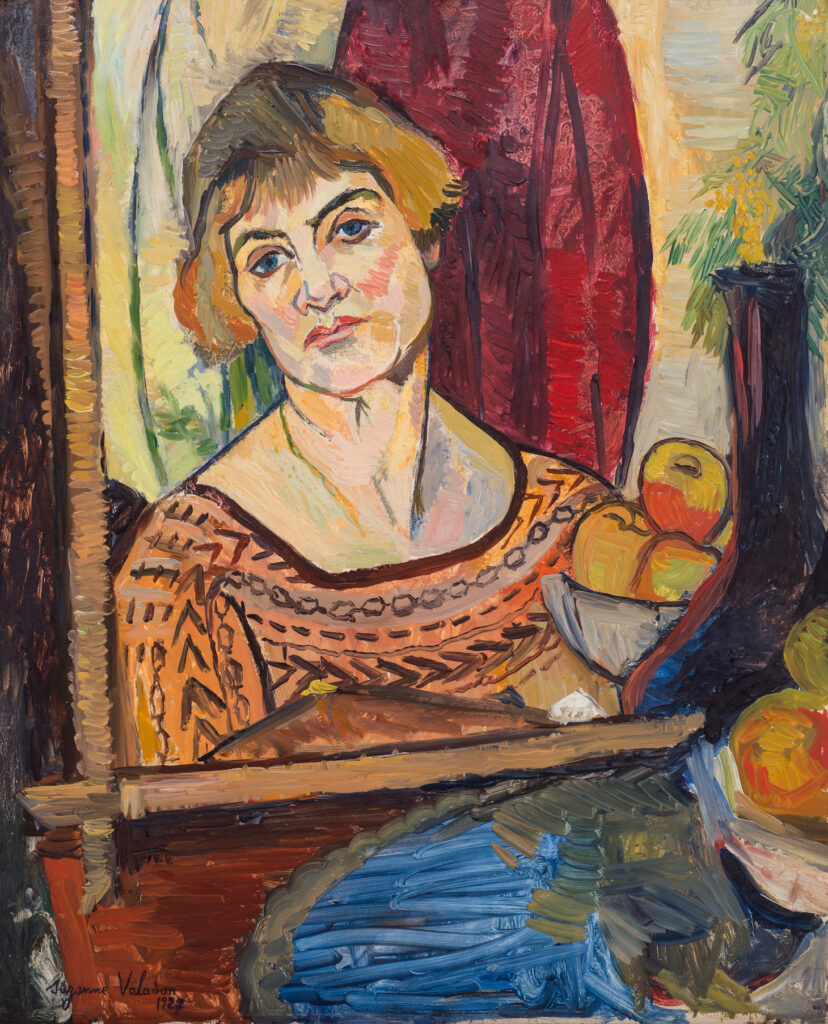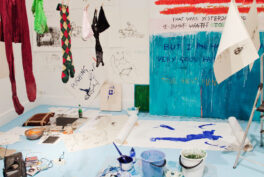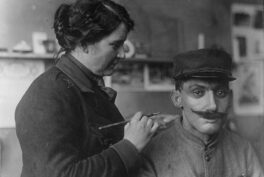Suzanne Valadon—Artist and Model
Suzanne Valadon was born in 1865 as Marie-Clementine Valadon in the western part of France in a working-class family. Later in her life, she moved to Paris, where she started her artistic career. Valadon never received any formal training; she was a self-taught artist. Interestingly, before becoming a painter, she worked as a model for several other painters—for example, Pierre Puvis de Chavannes, Pierre-Auguste Renoir, and Henri de Toulouse Lautrec. This means she had the experience of standing on both sides of the easel.
This extraordinary character of her relationship with painting largely influenced her own creative practice. She experienced having her body observed and depicted by another person on multiple occasions. Valadon modeled for numerous paintings, and all of them represented her very differently. Seeing her body being transformed all the time must have influenced the way she looked at herself.
While posing, she observed the artists at work. As Valadon was from a working-class family, she did not have an opportunity to attend the academy. She also did not always have the possibility to pay others to pose for her compositions. Since she could not paint other people, it seems logical that she often painted herself, like many other artists before her.
Self-Portrait, 1911
In her 1911 Self-Portait, Valadon portrayed herself as a painter at work. She is sitting in front of an easel, which is outside of the frame, and holding a palette with the colors she used to create the composition. The artist is facing the viewer, but her head is slightly tilted in the opposite direction. I read the scene as follows: Valadon is sitting in front of a canvas while painting the self-portrait we are looking at, and at the same time, she is gazing at a mirror that is placed next to the easel. This explains why her eyes are gazing to the left, while the painting she is working on is on the right.
The bright color palette can make us think of the works by Paul Gauguin, especially when we look at the yellowish skin tone. It brings to mind, maybe not his self-portraits, but other paintings, such as The Yellow Christ (1889) or Where Do We Come From? What Are We? Where Are We Going? (1897–1898). It is very possible that she saw one of these paintings and fashioned her likeness on them.
What is very interesting about the self-portrait is the fact that even though Valadon is clearly in a room, she decided to place two plants behind her head, giving us an impression of a natural background. The artist is playing with the idea of space in the portrait. The painting is not only an image of herself but also an opportunity to examine different ideas, possibly for future compositions.
Self-Portrait, 1927
As we can see with the this painting, Valadon’s self-portraits are very different from one another. Maybe it is because she enjoyed creating different versions of her story, both on and off the canvas. The Self-Portrait from 1927 is much brighter than the earlier one. Here, we are not looking at a likeness of the painter, but rather her reflection in the mirror.
The composition of the portrait is similar to a painting by Toulouse-Lautrec titled Self-Portrait in Front of a Mirror (1882–1883). Both canvases present an image of the artist in the mirror, with the figure being pushed to the background. The foreground is filled with everyday objects—for example, a teapot, a candleholder, or a bottle. Valadon and Lautrec were very close; she was his model, friend, and later partner, so it is probable she saw his painting in real life.
However, it is important to emphasize that she never merely copied the works of other artists. Suzanne Valadon built her compositions very carefully by starting with preparatory drawings. She created the paintings in sections and reworked the fragments until she was fully satisfied. This helped her achieve her own distinct, personal style and abandon the influence of other painters.
The self-portrait from 1927 has a completely different materiality from the 1911 painting. Valadon used thick brushstrokes to emphasize the texture of the composition. Because of that the colors appear separated and even evoke an abstract composition. We can see that, especially in the lower right corner of the painting, if we focus on the blue plate and the apples. Valadon was playing with various styles in her paintings, making her quite ahead of her time.
Valadon as Other Characters
One of Valadon’s paintings, Adam and Eve, 1909, is a representation of the painter herself with her lover André Utter. Adam and Eve are almost fully naked in the Garden of Eden (the leaves were added after the request of the organizers of the Salon d’Automne, where the canvas was exhibited).
By turning herself into Eve, Valadon is highlighting her own importance in the art historical narrative. Once more, the painting represents a different style from the two previously mentioned works. Firstly, it is not only a nude but also a full-body portrait. We can tell that Valadon studied the anatomy of the human body quite closely before painting this composition. Secondly, the figures are placed within a landscape, not indoors. This style of painting would become a signature of the artist.
Looking at one’s self is never as straightforward as it might seem. We never actually see our own faces, only the reflections in the mirror. Suzanne Valadon, on top of that, looked at herself through the lens of an artist. I believe it gave her a plethora of inspirations, which is why now we can enjoy so many of her incredible self-portraits!
P.S. Valadon’s work is featured in our Women Artists postcard set—a great collection of art made by talented women across centuries!
